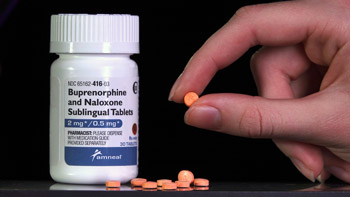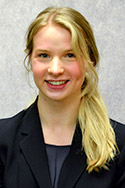Narcotics & the Brain: The "Why" of Dependency and "What" of Treatment
by Abby Lund Da Costa
February 2025
According to the Centers for Disease Control and Prevention (CDC), over half of Ramsey County residents will be prescribed a narcotic for some medical condition. Why should people know more about narcotics? Because, despite their benefits, one can become dependent on these medications.
Understanding narcotic dependency begins with knowing how these medications work. Also known as opioids, narcotics dull pain by acting on a part of the brain that controls how a person feels pain. In other words, when someone breaks their ankle, the nerves around the ankle send a pain signal to the brain. If that person then takes a narcotic, the narcotic doesn't work directly on the broken ankle but instead goes to the brain where it makes the brain feel less pain.
For some people, narcotics also trigger feelings of excitement and happiness, and the brain starts to desire not just pain relief, but more and more excitement and happiness. This is often a major player in the development of opioid dependency – and it usually happens without a person's awareness. Healthcare providers call this dependency opioid use disorder (OUD).
While research continues to search for a foolproof way to predict which brains are susceptible to OUD, what scientists have discovered is that anyone can become dependent. However, people with a personal or family history of alcohol or other substance abuse appear to be at a higher risk, along with young adults and people with mental health struggles.
The signs of OUD may be subtle. Some experts emphasize the "four C's": compulsion, control, craving, consequences. Compulsion may look like someone saying that they want to stop taking pain pills but can't. Control is a more hidden sign and refers to a person's thoughts almost being taken over by taking the next pill, even though they want to stop them. Craving is the desire itself to take the medication. However, it's the consequences of opioid dependency that are often the most noticeable signs: trouble at work, in relationships, or even with the law.
 Understanding how the
brain becomes dependent on opioids has guided the
development of MOUD treatment, the abbreviation for
medication used for OUD. One of several specific
treatments includes a combination medication that
protects the body from the normal effects of opioids:
buprenorphine/naloxone. So, how exactly does this
medication work? The buprenorphine part actually acts as
a "weaker" opioid – meaning that it produces
much milder effects while also acting to help decrease
opioid cravings. The naloxone component helps protects
patients from overdose if not taking the medication as
prescribed.
Understanding how the
brain becomes dependent on opioids has guided the
development of MOUD treatment, the abbreviation for
medication used for OUD. One of several specific
treatments includes a combination medication that
protects the body from the normal effects of opioids:
buprenorphine/naloxone. So, how exactly does this
medication work? The buprenorphine part actually acts as
a "weaker" opioid – meaning that it produces
much milder effects while also acting to help decrease
opioid cravings. The naloxone component helps protects
patients from overdose if not taking the medication as
prescribed.
Healthcare providers who offer MOUD must take special training to provide this treatment. With this training, they can offer their patients tailored treatment because no two people have the same treatment needs. Additionally, MOUD treatment usually starts with a person and provider meeting to best understand the person's unique needs and to talk about a medication treatment plan.
Anyone interested in the treatment can check in with the several Lake Region area providers offering this treatment. Other North Dakota providers can be found using the Substance Abuse and Mental Health Services Administration website's Buprenorphine Practitioner Locator.
While opioid dependence can feel impossible to beat, many people are achieving recovery with MOUD treatment.
About the Author
 Abby Lund Da Costa is a third-year medical
student at the University of North Dakota School of
Medicine & Health Sciences. She was selected as the
Devils Lake participant for the school's ROME program, or
Rural Opportunities in Medical Education. Part of the
ROME program teaches student doctors how rural newspapers
can be partners for sharing health information. The
information presented here is not intended for diagnosis
or treatment and should not be used in place of previous
medical advice provided by a licensed provider.
Abby Lund Da Costa is a third-year medical
student at the University of North Dakota School of
Medicine & Health Sciences. She was selected as the
Devils Lake participant for the school's ROME program, or
Rural Opportunities in Medical Education. Part of the
ROME program teaches student doctors how rural newspapers
can be partners for sharing health information. The
information presented here is not intended for diagnosis
or treatment and should not be used in place of previous
medical advice provided by a licensed provider.
